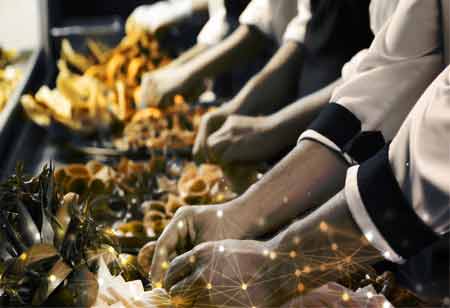THANK YOU FOR SUBSCRIBING
Be first to read the latest tech news, Industry Leader's Insights, and CIO interviews of medium and large enterprises exclusively from Food and Beverage Tech Review
Replacing Traditional Proteins with Yeast Alternatives
There has been a significant increase in the willingness and knowledge of customers to eat healthily in recent years.

By
Food and Beverages Tech Review | Monday, May 22, 2023
Stay ahead of the industry with exclusive feature stories on the top companies, expert insights and the latest news delivered straight to your inbox. Subscribe today.
With the growing population, yeast protein seems to be an attractive alternative to traditional protein sources such as plants and meat.
FREMONT, CA: There has been a significant increase in the willingness and knowledge of customers to eat healthily in recent years. Scientists are searching for new ways to produce food that is a source of easily digestible protein with a balanced amino acid composition to meet these needs. When utilised primarily as a culture medium and inexpensive waste substrates, such as industrial and agricultural wastes, yeast protein biomass (also known as single cell protein, or SCP), is generated.
Yeast protein appears to be a desirable substitute for conventional protein sources like plants and animals given the expanding population. Additionally, its biomass includes trace amounts of minerals and B-group vitamins. Consequently, employing yeast to produce protein offers both important nutrients and improves waste purification.
SCP may be grown and harvested for a lot less money and in a shorter amount of time than crops or animals. Additionally, yeast is adaptable in its use of a range of substrates. A wide variety of hydrophilic and hydrophobic wastes and byproducts, biomass, and raw materials are typical sources of yeast growth substrates for protein biomass production.
Natural wood wastes such as cellulose, hemicellulose, and lignin are affordable or free sources for protein production, but they need to be enzymatically processed first. Wastes and byproducts from the manufacturing of starch and other agricultural wastes, as well as domestic sewage and wastes from food processing, can all be simply used. It is essential to select such waste substrates that are affordable or free and that are also simple to get. The production of yeast proteins uses these substrates, which helps to lessen pollution. To support the best growth of the chosen strains, it is occasionally necessary to introduce additional nutrients such as nitrogen, phosphorus, and others into a waste culture media. Agricultural wastes are shown to be excellent substrates for producing protein at a low cost, resulting in a good quantity and quality of yeast protein biomass that is palatable to cattle. Additionally suited for animal feeding is yeast protein biomass made from a variety of industrial wastes, such as petroleum byproducts and biofuel waste. However, human use of yeast protein biomass requires additional food processing following regional flavours.
There is a theory that mass-producing genetic engineering techniques could improve the process of obtaining protein biomass. The rigorous laws governing the usage and production of genetically modified organisms (GMOs), particularly the growing of genetically modified soybeans may make it challenging. Therefore, using biomass from wild-type yeast could be advantageous. Notably, a viable substitute for fishmeal and soybean protein in nutrition, including aquaculture, requires the large-scale production of yeast at competitive pricing.
I agree We use cookies on this website to enhance your user experience. By clicking any link on this page you are giving your consent for us to set cookies. More info







